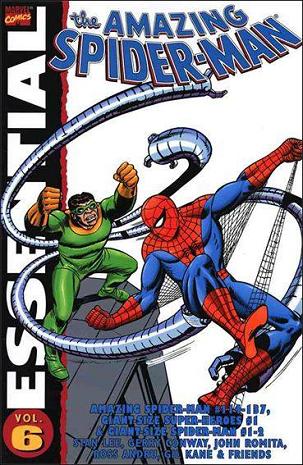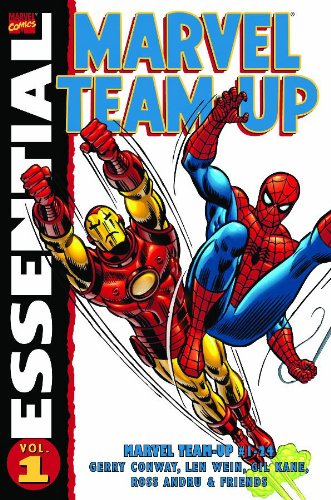
Essential Spider-Man Vol. 06
Gerry Conway, John Romita, Ross Andru, Gil Kane and friends
Reprints: Amazing Spider-Man #114-137 and more (November 1972- October 1974)
Get this for: the death of Gwen Stacy — four stars
Yes, just as happened with Essential X-Men and Essential Fantastic Four, I missed out on volume five of Essential Spider-Man. Annoying, since volume four ended on a cliffhanger as Doctor Octopus seemed to have the upper hand on Spider-Man. And how does volume six start? With a battle between Spidey, new villain Hammerhead and Doc Ock. You can see why I got a bit confused in the shop…
Anyway, this volume sees Gerry Conway firmly established as Spidey’s writer, though Stan Lee does return for a few issues halfway through. Conway used to be an incredibly prolific writer in the seventies and eighties, working for both Marvel and DC on all their headline acts, including a forty plus issue run on Amazing Spider-Man partially collected here. He may as much as anybody else be responsible for Marvel’s Bronze Age house style, that mix of superhero adventure and soap opera, with stories usually lasting one or two issues but subplots carried forward for much longer, a style he would also export to DC. Despite this he has never really been a fan favourite, has he, unlike a contemporary like Len Wein, let alone Steve Gerber. This may be because his writing was so familiar, so omnipresent that it could never surprise you like Wein or Gerber could. You won’t get anything experimental with Conway at the helmet.
For Spider-Man Conway is the ideal writer, as this volume shows. He has a good grasp of what makes Spider-Man tick, does well with the soap opera and while not as creative as his predecessors on the title, here still creates two classic Spider-Man villains: Hammerhead and Tarantula, not to mention the Punisher. But what he will be mostly remembered for is something else entirely: the Death of Gwen Stacy.
Gwen Stacy was of course Peter Parker/Spider-Man’s great love, not quite his first, but his first serious relationship. Gwen’s death was as much a turning point for him as Uncle Ben’s death was for making him Spider-Man in the first place. It cast a shadow over the rest of his life, though this is not always noticable even in this volume. Before her death, Spider-Man could always be certain that his powers could save himself and his loved ones from any danger. After it, he would always worry whether he would’ve to go through it a second time. For superhero comics as a whole Gwen Stacy’s death is a turning point as well, the first time (if I remember correctly) that such a prominent supporting cast member was killed off. As Kurt Busiek has argued, Gwen’s death could be seen as the end of the Silver Age, so great was its impact.
It’s interesting to see the differences in how Conway treats Gwen’s death with how it would be dealt with in modern comics. There is literally no lead-up. In the previous issue Spidey is still in Canada fighting the Hulk, he returns to New York, Norman Osborn remembers his past as the Green Goblin as well Spider-Man’s secret identity, kidnaps Gwen and lures Peter to the top of the George Washington bridge. They fight, the Goblin throws Gwen off the bridge, Spidey catches her with his web, but is too late: she’s already dead. It’s over and done with in one issue, while Norman Osborn himself dies in the next. Had it been written today, it would’ve needed a six issue story arc at least.
The art in this volume is by John Romita, Gil Kane and Ross Andru, in that order. These are all artists working in a roughly similar style, especially Romita and Andru, who also use many of the same inkers: Jim Mooney, Romita himself, Frank Giacoia. Of the three I prefer Kane, who has just that little bit more bite to his art. Ross Andru on the other hand I’ve always found a bit bland…
Many of the stories here I’ve read before, especially those leading up to the death of Gwen Stacy and those dealing with its aftermath, not in the least in the old Dutch Spider-Man Klassiek series, which provided a sort of “extended highlights”. To read them in context has been interesting: Gwen may death, but Spidey still has to fight a new villain month in month out. Various subplots continue to develop and come to fruition, the soap opera continues and one month doesn’t differ that much from another. There’s never been a period in Spidey’s where this relentless grind was so clearly visible..
